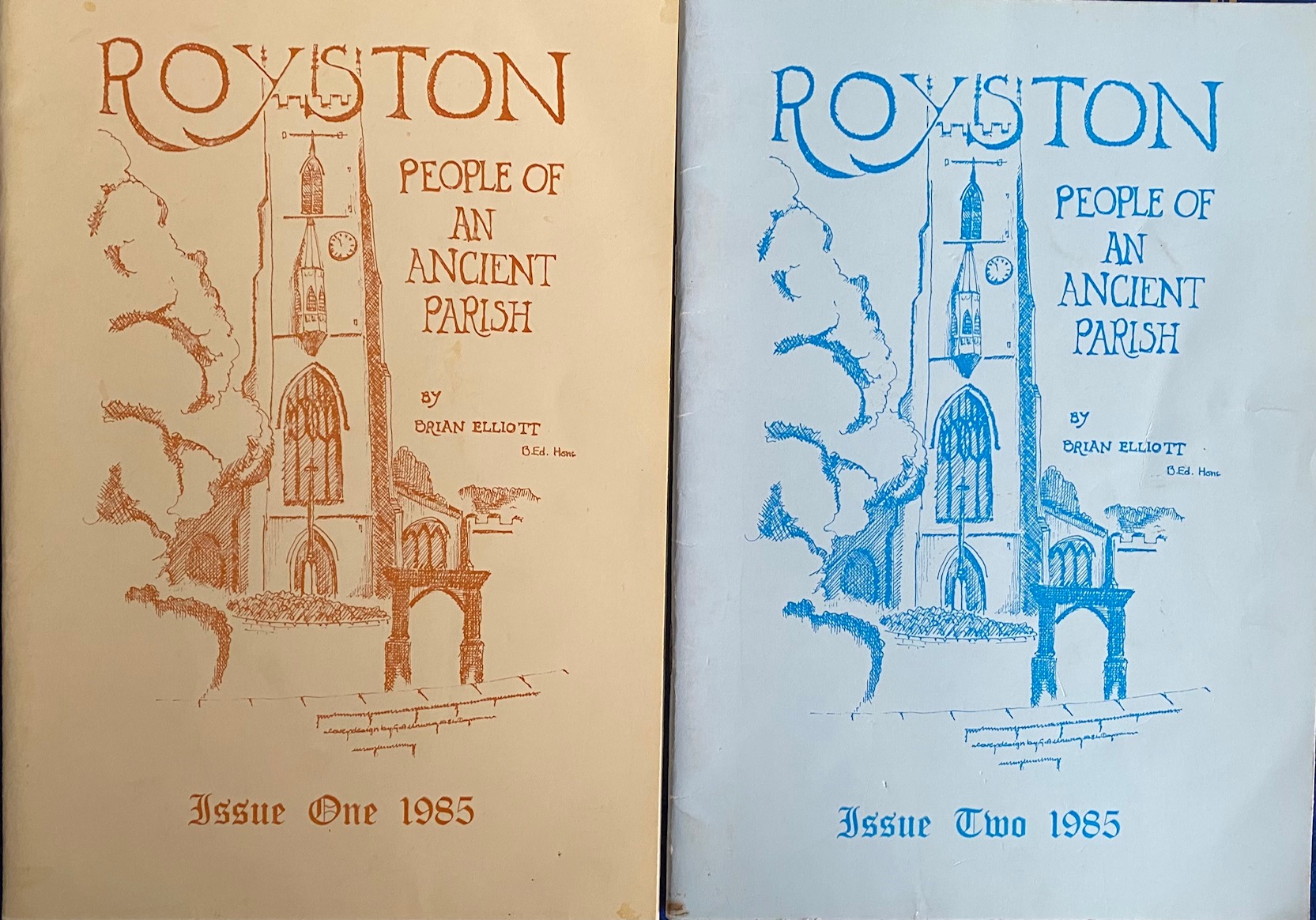Author Guest Post: Brian Elliott
Early local book publishing in Barnsley, a personal journey
Guess it wouldn’t be too far out to say that I was a pioneering author for what became the local arm of the Pen and Sword family of books. Back in the early 1980s — under the aegis of the Barnsley Chronicle — it was the Wharncliffe local book imprint that started a journey that continues to the present day.
On a freelance basis, I worked closely with a small team of designers via a little first-floor office by the rear entrance to the car park of the ‘Chron’. Later I learned that it was once part of a morgue. Can’t remember any sombre inertia though, as it soon developed in to a thriving ‘history factory’. It was great when Sir Nicholas Hewitt called in to say a cheerful hello and see what we were creating. The star of the show in the office was the talented designer Roni Wilkinson, who soon became a great friend and colleague.

Roni was and is a very talented artist with a unique sense of Barnsley humour, and by no means without his own ability to research and write, especially on military-related subjects. Mostly, the production process was primitive but worked surprisingly well. I often had to bring in copy in typescript or even handwritten formats. Original drawings were created and photographs scanned in the main building from originals.
Little expeditions to relevant local venues occurred during the course of the assembling of my first major book, The Making of Barnsley. It was based on a long series of articles published in the Barnsley Chronicle under the theme of ‘Barnsley Folks of Yore’, a somewhat romantic title I didn’t like much, so it gradually transitioned into Barnsley Before the Industrial Revolution.

It was the late Don Booker, editor of the Barnsley Chronicle who had responded positively to my suggestion of a series of local history articles. No fee could be offered but if all went well he assured me that a book might be published, using some or all of the material. This was really encouraging as for years I wanted to try and reach out to more people rather than my work being limited to ‘academic journal’ readers. For the series to work I had to write and submit enough wordage and illustrations covering about a month’s run of newspapers. A veteran journalist, Bill Blow, co-ordinated the process and Chronicle designers presented the features.

The Barnsley Folks of Yore/Barnsley Before the Industrial Revolution series started on 18 September 1986 and continued, just about every week, until 18 December 1987. It comprised 58 features in all, some on one-off subjects, others having topics stretched over a couple of editions. It was an amazing logistic undertaking, Bill doing brilliantly to handle and steer the process and me getting new copy ready in the limited spare time that I had. Reader response appears to have been good too, all encouraging for putting together something in book form.
Transferring everything into a book format, however, was by no means easy. It did not make sense just to reproduce the articles — on ‘random’ subjects — in the sequence that they appeared in the Chronicle; or indeed to do this chronologically. After a lot of thought, I decided the best way forward would be to organised the contents into broad themes, and integrate a lot of new, unpublished work to make the chapters more meaningful. The book thus encompassed a great deal of new, original material about the town and district based on my research at the universities of Leicester and Sheffield; and was also adapted from lecture notes from courses that I tutored locally for the WEA and the Extramural (Continuing Education) department of Sheffield University. Filling out some of the themes also involved several excursions to relevant sites and places of interest around the town, another Chronicle stalwart, Alan Billingham often accompanying me as a photographer.


About the same time I started recording tapes for use by the Barnsley Talking Newspaper (for the blind), adding a new dimension to the project. Dr David Hey, my postgraduate supervisor at the University of Sheffield, had earlier, published a popular book called The Making of South Yorkshire. This seemed a perfect title adaptation for my Barnsley book, and that is what we agreed. My new publication would look at the main influences and developments that helped to create the modern town of Barnsley, written in a style that would appeal to a popular readership and also to any local teachers keen to include local studies in their lessons.
I will never forget the arrival of the book, a few days before Christmas 1987. Tipped off, I dashed to the Chronicle offices and actually helped Roni and co unloaded the boxes from a delivery van. It was such a thrill to open several and retrieve my complimentary copies. There was little time to get stock into local outlets such as WH Smiths but somehow we managed to achieve this and adverts were placed in the Chron. It sold remarkably well and continued to do so into the New Year and beyond, meriting an early reprint.
View title by Brian Elliott here.

